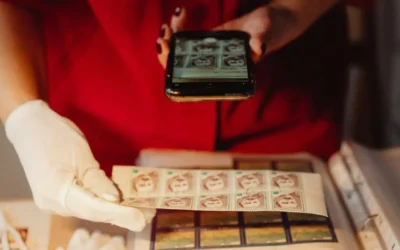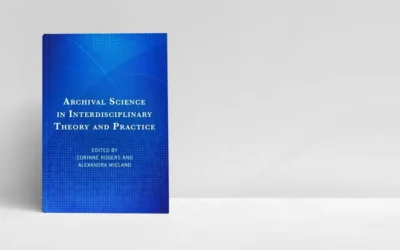Preserving Digitization Results
Margot Note
Digitization projects based on careful review, analysis, and planning yield resources that are functional and faithful to the archival sources and support new kinds of scholarship.
In addition, project plans, progress assessments, adjustments and corrections, and retention of project-related data strengthen knowledge for the future. Each successful project brings archivists closer to fulfilling the promises of the electronic environment.
Since primary sources transcend time and place, they provide valuable records of the past. Archives holding collections are responsible for managing them and making them available for generations. Until recently, some collections were difficult to access, but as equipment and methods evolved, so have collections. Digitization has vastly increased the number of primary sources available to researchers through electronic means. The phenomenal growth of digital information in institutions prompts an examination of the nature and importance of collections as technology changes how users conduct research.
Digital surrogates are among the most common interaction points between an archival institution and the public. For example, the materials might be viewed directly on the institution’s website, social media, or in a newspaper article, magazine feature, or academic publication. They inform the viewer’s perception of the institution. In marketing, this activity, known as brand interaction, is critical to creating high-quality branding. Therefore, institutions must be mindful of the quality of the digital assets they make available to contribute to their brand.
Raising Awareness
Archivists need to raise awareness of available digital content. For example, repositories can offer a blog. Blogs are relatively easy to create, allowing archives to grow an audience through regular posts. Organizations can also use social media to spread news about the project. Digitization is the perfect companion to social media. A social media post about a release of a digital collection provides meaningful content to explore. The social value also incentivizes traditional media coverage. The release, and the coverage surrounding it, can create engagement and awareness.
The marketing department may wish to contact local media, such as public radio and television stations, to see if there is interest in reporting on the project. In addition, consider exhibitions, publications, and lectures as venues for disseminating project updates and information. Archives can also benefit from collaboration. Archivists should find organizations with similar or complementary projects; those institutions may wish to work together to raise awareness.
Digital Preservation Basics
Digital preservation is a process that involves storing digital records with descriptive information in multiple locations at the highest resolution possible. It requires migrating the records to new storage media to prevent data loss, changing file formats before they become obsolete, and providing access over a long period. Digital preservation centers on storage media choices, system life expectancy, and the expectation to migrate digital files to future systems while maintaining the original digital system’s functionality and integrity. The growth of digital files has created critical preservation problems that traditional methods cannot resolve.
Three fundamental preservation strategies designed to preserve the integrity of digital files are refreshment, emulation, and migration.
Refreshing periodically moves a file from one physical storage medium to another to avoid the obsolescence or degradation of the storage medium. Because physical storage devices decay and technological changes make older storage devices inaccessible to new computers, some ongoing refreshing is likely necessary for years to come.
Migration converts data from one configuration to another or from one generation of technology to another, preserving the essential characteristics of the data. Migration gradually brings files into a narrower variety of file formats.
Like migration, emulation focuses on the application software rather than the data files. Emulation fuses software and hardware to reproduce the essential characteristics of one computer to another, allowing programs designed for one environment to operate differently. Emulation requires the creation of emulator programs that translate code between systems. The objective is that older data will run on modern computers under emulation.
There is a gap in digital records created in the late twentieth and early twenty-first centuries, and the long-term preservation of digital records is a challenge. Nevertheless, institutions, governments, and national and international organizations are developing preservation initiatives to preserve digital media. The success of these initiatives depends on the continuous dialog between all the parties involved.
Margot Note
If you’re interested in this topic and eager to learn more, please join us for “Digitize Your Collections: Access”, the sixth in Margot Note’s latest free webinar series, on Wednesday, June 28, 2023 at 11 a.m. Pacific, 2 p.m. Eastern. (Can’t make it? Register anyway and we’ll send you a link to the recording afterwards). Register now or call 604-278-6717.
Never miss another post. Subscribe today!
Similar Posts
Ensuring Long-Term Access to Digital Archives
Long-term preservation is essential to ensure digital archives remain accessible and usable.
5 Best Practices for Personal Digital Archiving
Archivists have developed best practices for organizing and maintaining personal digital archives, safeguarding digital legacies for future generations.
Interview with the Editors: Wieland and Rogers on Interdisciplinary Archival Science
Alexandra Wieland and Corinne Rogers co-edited Archival Science in Interdisciplinary Theory and Practice. My interview with them is below.
The Importance of Personal Digital Archiving (Plus Steps to Get Started)
Archivists often help individuals manage and preserve digital files of personal significance.




Leave a Comment
Comments are reviewed and must adhere to our comments policy.
0 Comments